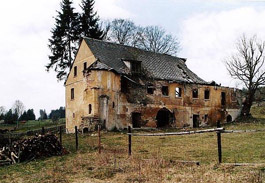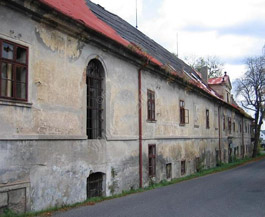
Czech cultural monuments are often not monuments
 |
Concerns about the validity of the monument list are raised by the interpretation of the Ministry of Culture (MK) available on the office's website and the finding of the Constitutional Court, according to which the ministry was supposed to declare cultural monuments in administrative proceedings with the right to appeal.
The situation is serious also due to the proposed heritage law. This law intends to convert the entire list of monuments into a new form, to revise all its items, and to consider only those for protection for which relevant documentation exists. If documentation does not exist, an administrative procedure would have to be conducted again to declare the objects as cultural monuments.
The problem of imperfect declarations of certain monuments was already pointed out a few years ago by the heritage inspection of the MK. The Czech Krumlov Heritage Association repeatedly emphasizes it. MK spokesman Jan Cieslar states that the vast majority of monuments on the list are declared properly. "In my opinion, there are many more improperly declared monuments than the Ministry of Culture states. Unfortunately, this is probably a large majority, and the central authority has buried its head in the sand for many years regarding this issue," said Zbyněk Dočkal, the mayor of the heritage association. He believes the problem is now "insidiously exploited" by the law's proponent.
According to him, the situation could be resolved by an amendment to the heritage law, which would state that all items listed in the current list of cultural monuments are cultural monuments.
However, other critics of the proposed law warn that Czech Republic could suddenly lose a large percentage of its monuments. This concern is voiced not only by civic associations but also by heritage experts employed in state institutions, though they do not wish to make their opinions public.
The authors of the law also admit that the current documentation of monuments is unsatisfactory. A list from the monument registry does not, according to them, serve as proof that an item is a monument. They want the new list to have the same value as today's property registry extract.
Whether the disputed registration of an object in the monument list has created rights and obligations for its owner arising from the law could be determined by a court. Already today, cases are multiplying where owners of monuments are requesting proof of the monument declaration. If they do not receive it, they could potentially sue and are likely to win in court.
 |
"Although the castle grounds in Dobříčany (...) meet the conditions outlined in the concept of a cultural monument, they were registered in the relevant state list of monuments of the Czech Republic contrary to the legal regulations in effect at that time. It cannot be considered a cultural monument, it does not have its status, and it is merely a piece of real estate. The registration of this real estate in the state list of monuments of the Czech Republic should therefore be administratively removed," reads the reasoning of the judgment. However, the castle in Dobříčany remains on the list of immovable cultural monuments.
The central list of cultural monuments documents about 40,000 immovable monuments and 50,000 movable ones. The MK today declares an object or item as a cultural monument, while the government declares national cultural monuments. In the past, monuments were to be recorded by other, lower bodies of state heritage care, but always based on administrative proceedings. However, today, state heritage care lacks the files from these proceedings.
The problematic period is primarily when the regional national committee was supposed to decide on the registration of a monument according to the law, but the monument list states that it was conducted by district national committees. This would mean that at least half of the monuments are listed without justification. And it is precisely this part of the tangible cultural heritage whose cultural and historical values have never been questioned.
The new heritage law proposes to re-register all monuments within 15 years. This means conducting administrative proceedings for approximately 100,000 monuments, which critics believe is impossible to achieve. The MK states that it will carry out "accelerated" proceedings, but even so, it would have to newly declare several dozen monuments daily. Some monuments have multiple owners, all of whom are participants in the proceedings; cultural and historical values of the object are established, and the entire procedure takes several months. It can be expected that owners will appeal the results of the proceedings, i.e., file an objection - and that is decided by the minister. Thus, dozens of complex cases would have to be handled daily in this way.
The MK assures that during the period when the monuments are being "re-declared," the objects currently on the list will still be viewed as monuments. The owner reportedly will not have to wait for confirmation that their object is a monument; however, some owners will probably find that their object is not a monument.
The minister intended to present the draft law to the government in October and to parliament in the spring of next year, but its fate is now uncertain. What is certain is that various parties have strong reservations about the proposed version of the law, which has been awaited for 20 years, alongside the Czech Krumlov heritage experts, the Old Prague Club, the Association of Professional Workers in Heritage Care, and the National Heritage Institute, the Institute of Heritage Care and Renovation of CTU, restoration schools of AVU, and the Archaeological Institute of AV.
The English translation is powered by AI tool. Switch to Czech to view the original text source.
11 comments
add comment
Subject
Author
Date
Pochbnosti o památkové ochraně jsou převážně účelové
Dagmar Sedláková
29.10.08 04:01
tomas
29.10.08 04:16
kulturní památky
hoja
29.10.08 06:28
České kulturní památky mnohdy památkami nejsou
29.10.08 09:35
Otázka na paní Sedlákovou
Milan
30.10.08 06:43
show all comments










